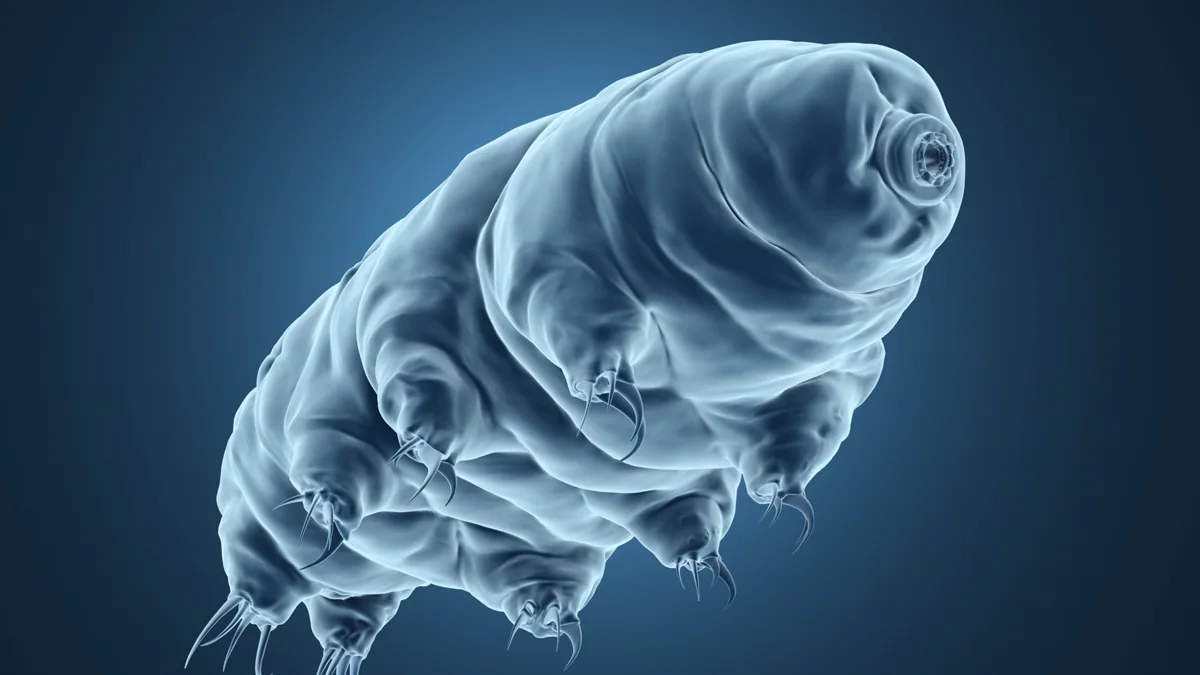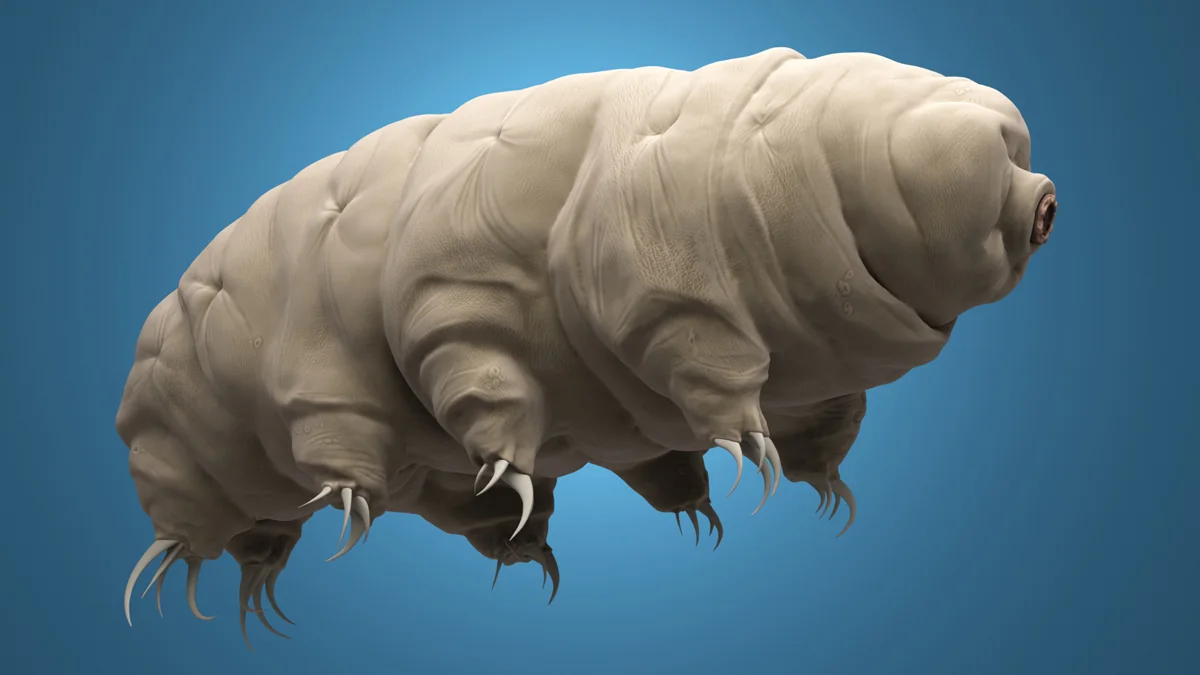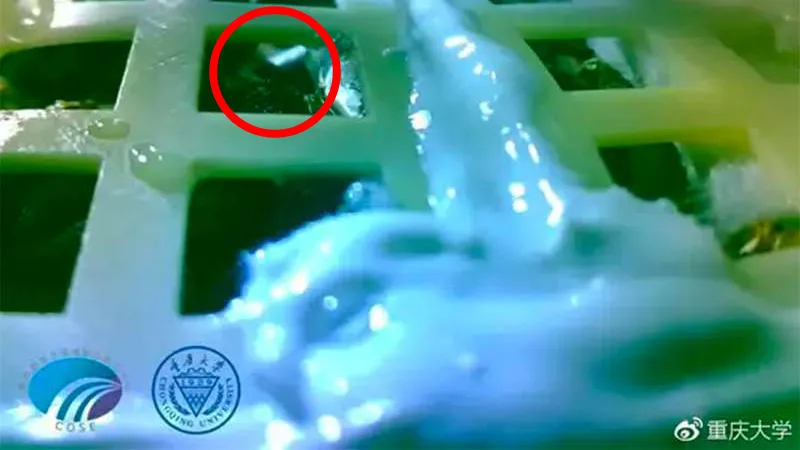
Lunar lander crash may have established 'water bear' colony on the Moon
Water bears on the Moon!
When Israel's Beresheet lunar lander crashed on the Moon back in April, the mission came to an unexpected and unfortunate end, but part of it may survive for decades.
Installed onboard the lander was a very special package, which looked like a standard DVD, known as the Lunar Library.
Designed by the Arch Mission Foundation to be the 'first library on another celestial body', this disk is actually 25 different layers of nickel, each just 40 microns thick, which together hold a collected database of human history and civilization, both in analogue and digital formats.

An image of the top layer of the Lunar Library. Credit: Arch Mission Foundation
Also sandwiched between these disks, sealed in epoxy resin, were samples of human DNA, as well as thousands of tardigrades - microscopic eight-legged animals also known as 'water bears'.

An artists rendering of a tardigrade. Credit: Getty Images
Tardigrades are remarkable creatures, known as 'extremophiles'. They can survive in extremely hot and extremely cold temperatures, crushing pressures, extreme dehydration, and exposure to radiation that is well beyond what is considered lethal for other animals. They can even survive in the vacuum of space!
So, how could these tardigrades survive on the Moon after the lunar lander impacted with the surface? According to what Co-founder, Chairman and CEO of the Arch Mission Foundation, Nova Spivack, told Wired.com, the resin used to secure the DNA samples and tardigrades to the Library would have made the entire package much more durable.
"Ironically, our payload may be the only surviving thing from that mission," Spivack told Wired.
Now, the tardigrades included in the Lunar Library were dehydrated to preserve them. So, thousands of tiny water bears are not currently roaming around on the lunar surface (unless, perhaps, they have found some source of subsurface ice they could take advantage of for water).
Still, with current methods and technology, dehydrated tardigrades can be revived up to 10 years after they were dried out. So, it's possible that when people start to visit the Moon again in the 2030s, someone could retrieve the Lunar Library and potentially revive these little critters after their long nap.
OTHER LIFE ON THE MOON
These tardigrades are not the first lifeforms to be left on the Moon.
So far, there are probably around 100 different pieces of heavy equipment on the Moon - boosters, landers, rovers, etc., and each and every one of them was handled by humans before they were launched into space. Since the Moon is an airless environment, NASA and other space agencies do not need to be as careful about planetary protection as they would be when sending a mission to Mars. Planetary protection scientists are responsible for ensuring that we do not contaminate potentially habitable areas of other celestial bodies with Earth microbes.
Thus, each of those pieces of equipment likely had some kind of microscopic organism clinging to its hull or components when it landed or crashed on the Moon.
The Apollo lunar missions - Apollos 11, 12, 14, 15, 16 and 17 - each put two human beings down on the surface of the Moon. While none of these humans stayed there, they likely 'tracked' microbes into the spacecraft, which would have gotten onto their spacesuits and other equipment. Thus, any pieces of equipment that were left behind (Neil Armstrong's space boots, for example), likely had these microbes on them. The Apollo 14 astronauts also brought seeds on the trip with them, but those were returned to Earth and planted.
There's also the 96 bags of human waste that were left on the Moon from 1969 to 1972, which were sure to have some kind of microbes living inside.
The first life sent to the Moon to stay there to stay, intentionally, rather than just being left behind, wasn't until much more recently. When China landed their Chang'e 4 mission on the Moon's far-side in January 2019, the lander included a small air-tight biosphere chamber. Inside the chamber were cotton seeds, rapeseed, potato seeds and arabidopsis seeds, to see if these plants would grow on the Moon. It also contained yeast and fruit flies, to judge if these organisms could survive.

Plants have been spotted sprouting in Chang'e 4's sealed biosphere experiment. The green cotton leaf can be seen just left of centre, in the image above. Credit: Chongqing University
Within a few weeks of the landing, it was reported that the cotton seeds had sprouted, but by then, the biosphere part of the mission was over. With lunar night falling over the landing site on January 20, nothing inside the chamber would survive the -170°C cold for the two weeks until the Sun rose again over the lander.
The fact is, even though these lifeforms were left on the Moon, none of it is likely still alive. The harsh radiation, extreme heat and cold, lack of water, and airless environment would make short work of any organisms that made the journey... except maybe these tardigrades.
It will be very interesting to follow up on this mission in the decades to come, to see if any of these little creatures actually survived.
Sources: Wired | Arch Mission | Global News |











